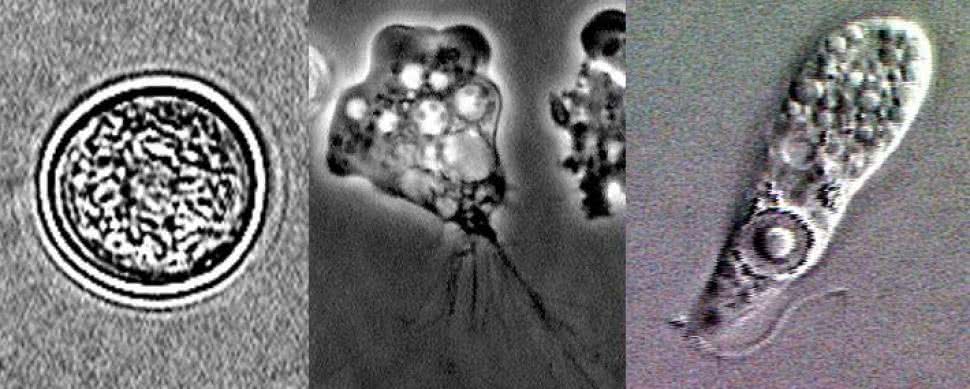A 71‑year‑old woman from Texas died in late May after succumbing to an infection caused by the rare and deadly brain‑eating amoeba, Naegleria fowleri. According to a CDC report, the patient—previously healthy—used a nasal irrigation (neti pot) filled with unboiled tap water from her RV’s faucet at a Texas campground. Within four days, she experienced fever, headache, and altered mental status; seizures followed, and she died eight days after symptoms began.
Tests later confirmed N. fowleri in her cerebrospinal fluid. According to the CDC, fewer than ten Naegleria fowleri infections are reported in the U.S. annually, and the fatality rate exceeds 97%. Primary amebic meningoencephalitis (PAM), the disease caused by the amoeba, typically leads to death within one to twelve days after exposure, with initial symptoms often resembling common flu.
The CDC emphasizes that nasal rinsing with nonsterile water is highly risky. In this case, investigators noted the contaminated water likely originated from the RV’s inadequately disinfected tank or possibly the municipal supply feeding the campground. While municipal tap water is generally safe to drink, it may still harbor amoebae if not properly treated, particularly in warm-weather conditions that encourage N. fowleri growth. The CDC strongly recommends using only distilled, sterilized, or previously boiled and cooled water for nasal irrigation.
Related reading: How to Protect Yourself from Waterborne Diseases
Public Health Warnings and Guidance Amid Rising Awareness
Public health officials caution that infections with Naegleria fowleri are extremely rare but almost always fatal. In the U.S., around 164 infections have been recorded since 1963, though only four survivors are known. The organism typically thrives in warm freshwater environments—such as lakes, hot springs, and poorly maintained swimming pools—but can also contaminate tap water systems if conditions allow.
A Texas woman died from an infection caused by a brain-eating amoeba after using tap water in a nasal irrigation device, according to the CDC. https://t.co/AndEUzJKtX
— CBS News (@CBSNews) June 6, 2025
CDC guidelines recommend:
- Using only distilled, sterile, or boiled (and cooled) water for sinus irrigation devices.
- Proper maintenance and disinfection of private water systems, including RV tanks.
- Avoiding allowing water to go up the nose during recreational activities like swimming in lakes or ponds.
“In very rare cases, an infection can occur after contact with inadequately chlorinated swimming pool water or contaminated tap water,” the CDC noted.
Health officials stress this case as a stark cautionary tale that underscores the importance of safe nasal hygiene and water safety, particularly during warmer months. While tap water is safe for general use, it may still carry fatal pathogens if not filtered or treated correctly.
RV owners and campground operators are advised to routinely disinfect water systems. Experts also urge wider public awareness: according to one CDC medical alert, “the risk of brain‑eating amoeba is very low,” but improper water use for nasal rinsing remains a serious hazard, as nearly all cases are fatal.
This tragedy serves as a reminder that even everyday activities—like nasal rinsing—can become deadly when performed with untreated water. Preventive measures are clear: use only boiled, distilled, or sterile water for sinus irrigation; clean and maintain water systems diligently; and remain cautious around untreated freshwater. These steps are vital to preventing future PAM cases in the U.S., where the disease remains rare but relentlessly severe.
❓ FAQs – Brain-Eating Amoeba Death from Nasal Rinse
Naegleria fowleri, often referred to as a “brain-eating amoeba,” is a rare but deadly microscopic organism that causes a brain infection called primary amebic meningoencephalitis (PAM). It is typically found in warm freshwater environments.
Infection occurs when contaminated water enters the body through the nose—usually while swimming, diving, or using a nasal rinse device with unsafe water. It does not spread through drinking water or person-to-person contact.
Yes, if used improperly. While most tap water is safe to drink, it is not sterile. Using unboiled tap water in nasal rinses can introduce Naegleria fowleri into the nasal passages, potentially leading to infection.
Symptoms often start within 1 to 12 days after exposure and include headache, fever, nausea, vomiting, stiff neck, seizures, altered mental state, and coma. The condition progresses rapidly and is often fatal.
To avoid infection:
– Use sterile, distilled, or boiled and cooled water.
– Do not use tap water unless properly sterilized.
– Clean your nasal rinse device after each use and let it dry.
Treatment is difficult and not always successful. Some medications, such as miltefosine, have shown potential in a few survivors, but early diagnosis and aggressive care are critical.














+ There are no comments
Add yours